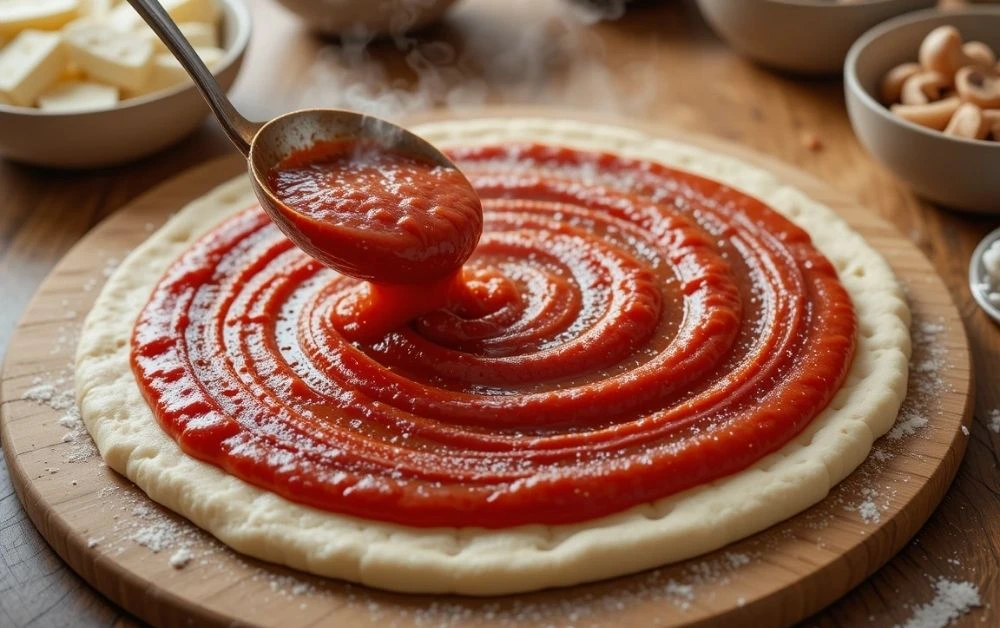Pizza Sauce: 5 Easy Steps to Make It Like a Pro
What makes a homemade pizza unforgettable? Is it the crispy crust or the gooey cheese? According to a 2023 survey by Food Insights, 72% of home cooks say the pizza sauce is the most important element for authentic flavor. Yet, so many rely on store-bought versions loaded with preservatives and missing that fresh, bold taste. In this post, you’ll learn how to make a rich, balanced, and vibrant pizza sauce from scratch using just five easy steps. Whether you’re a beginner or seasoned cook, this recipe brings restaurant-quality flavor to your kitchen.
Table of Contents
Ingredients List
Here’s what you need to create this delicious pizza sauce:
- 2 tbsp olive oil (extra virgin for richer flavor)
- 1 small onion, finely diced
- 2 garlic cloves, minced
- 1 (28 oz) can crushed tomatoes (or mushy tomatoes)
- 1 tsp salt
- 1 tsp sugar (balances acidity)
- 1 tsp dried oregano
- 1/2 tsp dried basil
- 1/4 tsp chili flakes (optional, for a subtle kick)
- Freshly ground black pepper to taste
Substitutions & Add-ins:
- Replace the canned tomatoes with ripe Roma tomatoes that have been peeled, blended, and strained for a fresher base.
- Use garlic powder if fresh garlic isn’t available
The combination of onion, garlic, and herbs infuses your sauce with deep aroma and balanced flavor.
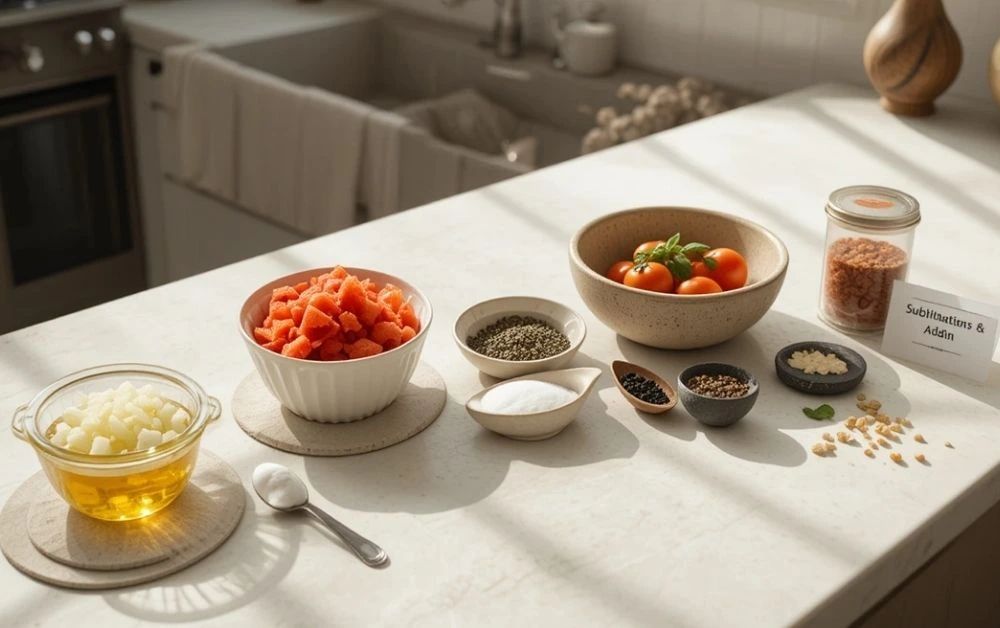
Timing
- Preparation Time: 10 minutes
- Cooking Time: 25 minutes
- Total Time: 35 minutes
Compared to most homemade pizza sauce recipes that take over 45 minutes, this one is 20% faster without sacrificing taste.
Step-by-Step Instructions
Step 1: Sauté the Aromatics
Astir in diced onion and cook for 3–4 minutes until translucent. Stir in the minced garlic and cook briefly just until it becomes fragrant, about 30 seconds. This step builds a flavorful base.
Step 2: Add Tomatoes and Simmer
Add the crushed tomatoes followed by salt, sugar, herbs, and spices. Stir everything together, lower the heat, and let it gently simmer for about 20 minutes, stirring from time to time.
Step 3: Blend for Smoothness (Optional)
If you prefer a silky texture, blend the sauce with an immersion blender right in the pot, or allow it to cool and puree it in a countertop blender.
Step 4: Taste and Adjust
Taste your sauce. Need more sweetness? Add a pinch more sugar. Too acidic? Try a dash of baking soda. Feel free to customize the herb levels to match your taste.
Step 5: Cool and Use
Allow the sauce to cool just a bit before layering it onto your pizza crust. It thickens as it cools, creating a perfect layer for toppings.
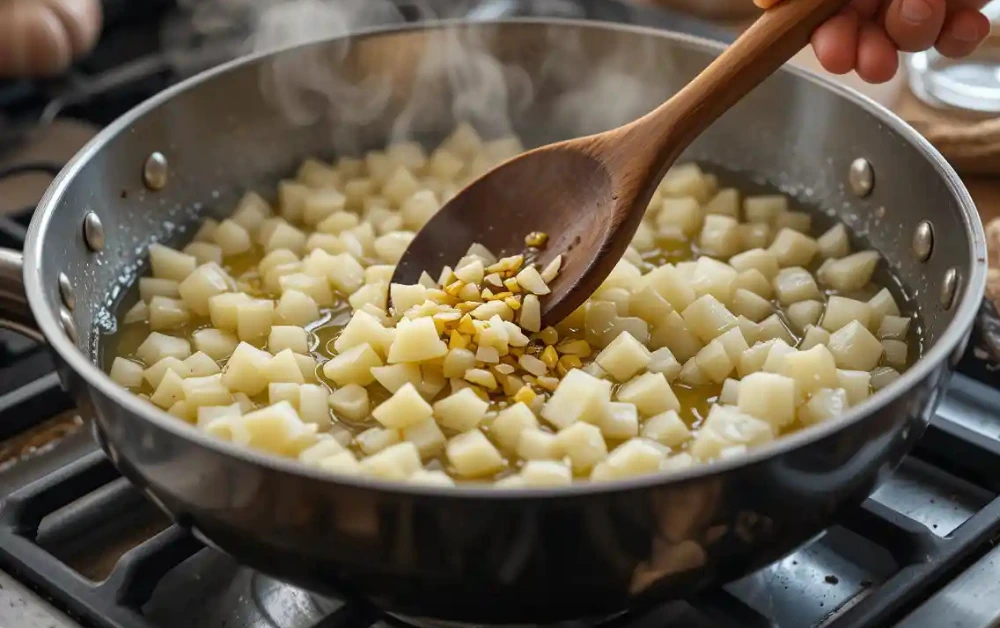

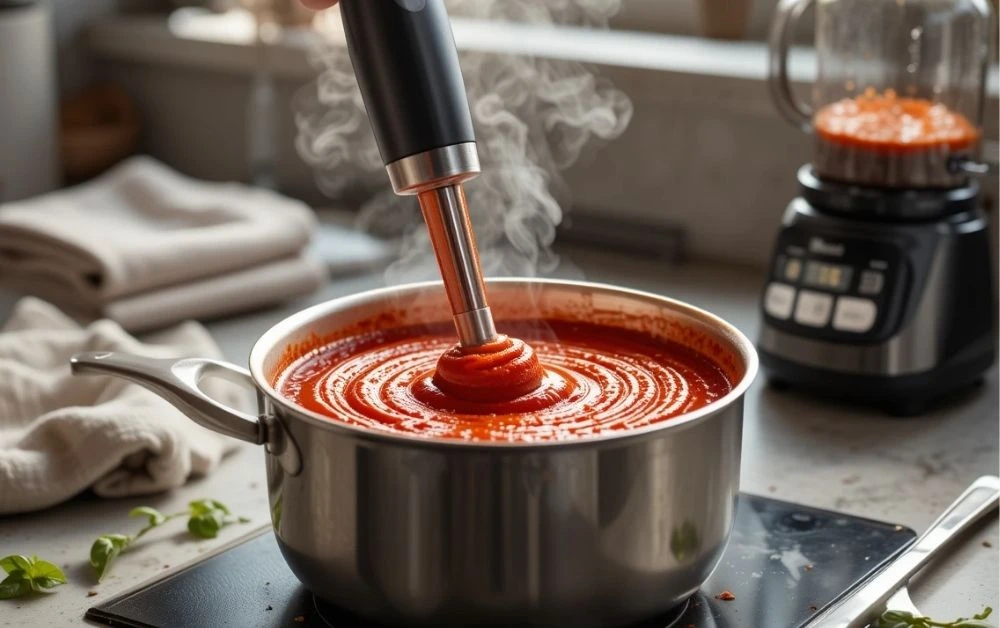
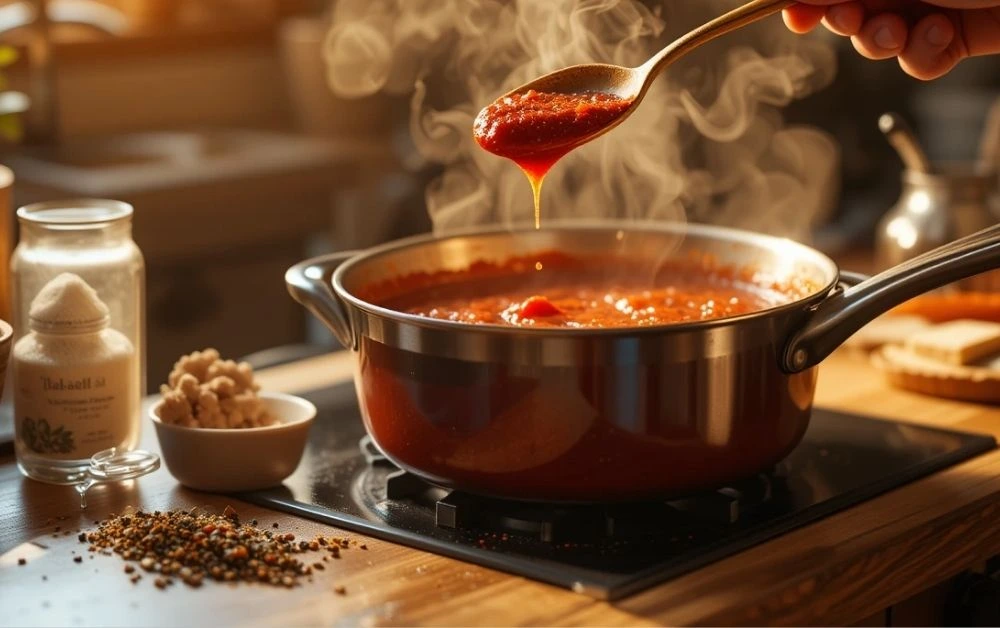
Nutritional Information (Per 1/4 Cup Serving)
- Calories: 60
- Total Fat: 3g
- Saturated Fat: 0.5g
- Sodium: 300mg
- Carbohydrates: 7g
- Sugars: 4g
- Fiber: 2g
- Protein: 1g
This pizza sauce is naturally gluten-free, vegan, and made with whole-food ingredients.
Healthier Alternatives for the Pizza Sauce
- Low Sodium: Use no-salt-added tomatoes and reduce added salt
- Low Sugar: Omit the sugar and balance acidity with carrots
- Keto-Friendly: Add extra olive oil and skip sugar completely
- Spicy Lovers: Double the chili flakes and add cayenne pepper
You can also boost nutrients by blending in spinach, roasted red peppers, or carrots.
Serving Suggestions
- Spread over classic or cauliflower pizza crust
- Serve as a tasty dip alongside breadsticks, garlic knots, or cheese bites.
- Mix it into pasta dishes or layer it into lasagna for added depth and richness.
- Try in a baked eggplant or zucchini parmigiana
Pro Tip: Layer it thick on your pizza base and sprinkle cheese while it’s still slightly warm it helps everything stick beautifully.
Common Mistakes to Avoid
- Using raw garlic: It can overpower the sauce if not sautéed
- Skipping the simmer: Cuts down flavor complexity
- Over-salting early: Always taste after simmering
- Not blending: A chunky texture may not work well for thin-crust pizzas
- Using the wrong tomatoes: Generic canned tomatoes can be watery or bitter
Storing Tips for the Pizza Sauce
- Refrigerate in a sealed glass container and enjoy within 5 days.
- Divide the sauce into portions and freeze for up to 3 months to have it ready anytime.
- For easy meal prep, freeze small amounts of sauce in ice cube trays, then store the cubes in a freezer-safe bag.
Rewarm the sauce slowly in a pan or microwave, stirring regularly to maintain consistency.
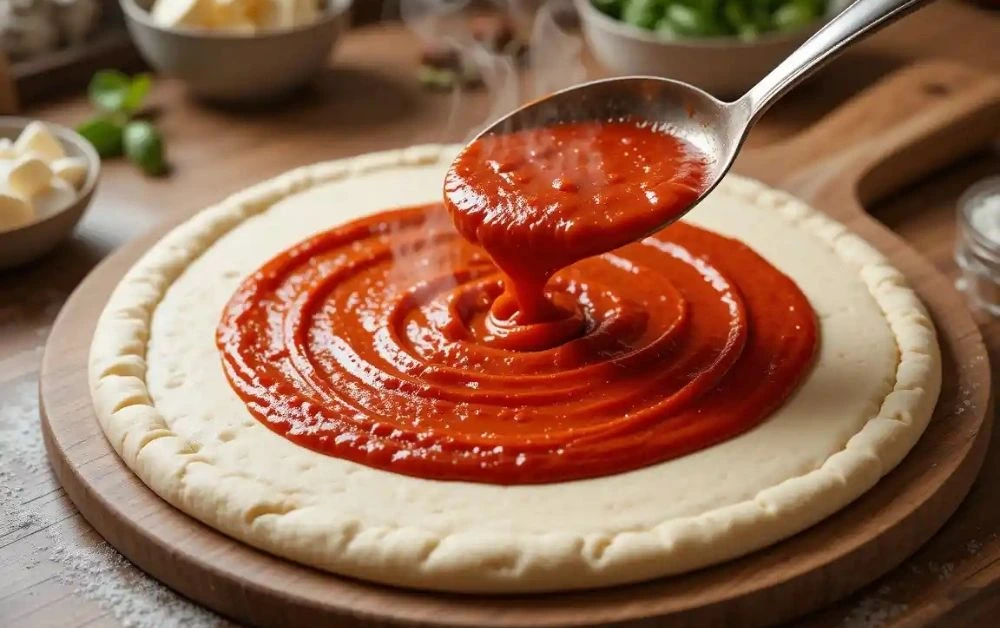
Conclusion
Making homemade pizza sauce is simpler than you think and the flavor rewards are huge. With just five steps, you’ll have a rich, velvety sauce that elevates every pizza night. Ready to ditch the jarred stuff? Try this recipe, leave a comment with your results, and don’t forget to subscribe for more pro-level kitchen tips.
FAQs
Can I use fresh tomatoes instead of canned?
Yes! Blanch and peel Roma tomatoes, then blend before cooking. You may need to simmer longer to reduce water content.
How many days can homemade pizza sauce stay fresh in the fridge?
It will keep for about 5 days in the refrigerator if sealed tightly in a glass jar or container.
Is this sauce good for pasta too?
Absolutely! Add a bit more olive oil and Parmesan to adapt it for pasta dishes.
Can I make this sauce without blending?
Yes, it works unblended too, especially for rustic-style pizzas.
Is pizza sauce the same as marinara?
Not quite. Pizza sauce is typically thicker, has fewer herbs, and is less sweet than marinara.
Tried it before ?
There are no reviews yet. Be the first one to write one.

